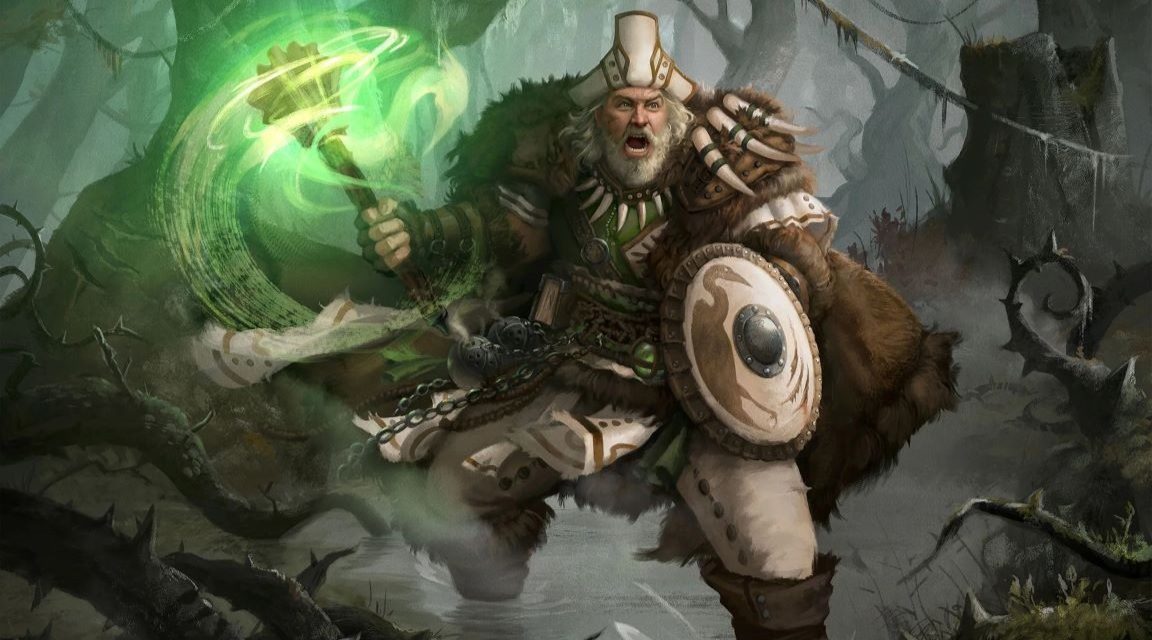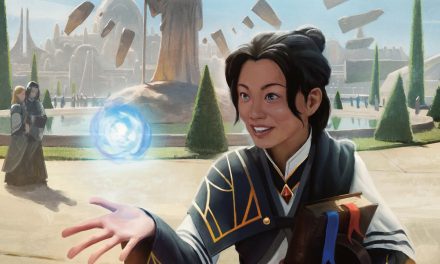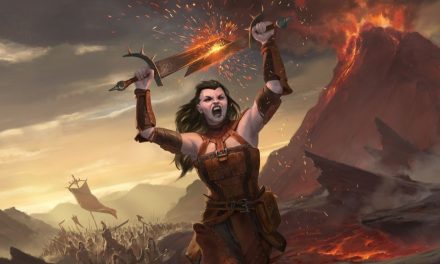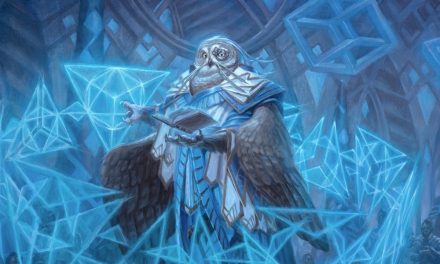While deities commonly use Clerics and Paladins to exercise their will on the Material Plane, sometimes they need a little more muscle.
That’s where the Zealot Barbarian comes in!
Zealots take the phrase “divine fury” to an entirely new level as they charge into battle. With their deity’s protection, even death can’t stop them.
It doesn’t get more “hellfire and brimstone” than this, folks!
This is the full subclass guide to the Zealot Barbarian in D&D 5e!
What is the Zealot Barbarian in D&D 5e?
Zealot Barbarians are fearsome warriors who are able to channel divine power through their rage in battle.
More often than not, Zealots follow deities who preside over war, violence, and destruction.
Harnessing that divine power and a righteous fury from deep within themselves, these Barbarians become an unstoppable force of destruction. If they do get knocked down or even killed, it’s never for very long!
Deities that commonly inspire Zealot Barbarians include:
- Tempus, the God of War and Honorable Battle
- Uthgar, the God of Physical Strength and patron of the Uthgardt tribes
- Lathander, God of Renewal, Athletics, and Vitality
- Kord, God of Strength, Athletics, and Storms in Greyhawk
- Hextor, evil God of War, Tyranny, and Despots in Greyhawk
- Erythnul, evil God of Hatred, Malice, Envy, and Slaughter in Greyhawk
Of course, a Zealot might also have a healthy reverence for Kelemvor or the Raven Queen. That might offer some additional explanation as to why the character is able to constantly defy death!
Not all Zealots or the deities they worship are evil, but they’re also rarely good. Still, even certain good deities might find a use for Zealots when times get especially dire.
The Zealot Barbarian can be found in Xanathar’s Guide to Everything alongside the Storm Herald and Ancestral Guardian subclasses.
Role in the Party
There’s a bit of a trade-off to the Zealot Barbarian compared to other subclasses. You don’t get many improvements to your damage output, but you are able to take a ton of punishment.
With their incredible survivability and some handy supporting features, the Path of the Zealot is actually a very defensive subclass option.
This means that the Zealot’s game is all about outlasting their enemies, especially in melee combat. Think of yourself as the party’s bulldog with plenty of stubborn persistence to achieve your goals.
Just make sure you pay attention to how you can position yourself in combat.
If you’re in a dungeon, look for bottlenecks (like a doorway or narrow hallway) that you can post up at. Your allies behind you can use ranged attacks and spells to hit enemies while you’re forming a wall to keep them safe.
If you’re in an area that’s more open, don’t be afraid to break position to attempt to force enemies to focus on you.
Barbarians are very durable as it is, but the Zealot is particularly geared to function as the party’s “meat shield.”
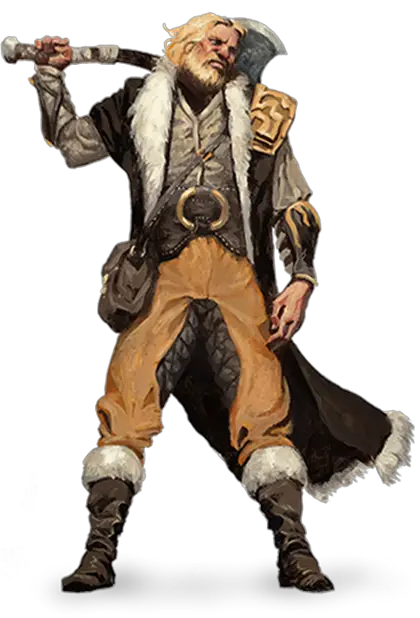
Zealot Barbarian Features 5e
As I mentioned, the Zealot Barbarian is more of a defense-oriented subclass.
You’ll get a nice feature that lets you put out extra damage right from the get-go, but everything else you get is focused on survivability.
If you use these features well, it offers a ton of extra support to your party. You’ll eventually become an immovable mountain of hit points between your party and whatever enemies you encounter!
Let’s check out what you gain from the Path of the Zealot!
Divine Fury (Level 3)
If there’s one thing that all Barbarians just love, it’s dealing damage.
So why not start things off strong with a feature that gives you even more damage output?!
While you’re raging, the first creature you hit on each of your turns with a weapon attack takes extra damage equal to 1d6 + half your Barbarian level.
The extra damage is necrotic or radiant. You choose the type of damage when you gain this feature.
This is some very solid extra damage and the feature scales as you level up which is always nice! Additionally, radiant and necrotic damage tend to be reliable (especially radiant).
Be aware that you apply this once per turn to the first creature you hit with a weapon attack. (An unarmed attack won’t trigger this, for example.)
Additionally, note that Divine Fury only activates with damage you deal on your turn. This means that Divine Fury does not work on attacks of opportunity or readied actions since those would happen outside of your turn.
But you’re almost certainly going to be spending pretty much every turn attacking enemies. You’ll be getting plenty of use out of Divine Fury throughout your adventure!
It’s kind of like a miniature version of the Paladin’s Divine Smite. Spread over the combat and dealing damage to the first creature you hit each turn, the extra damage adds up very quickly!
As far as early-level features go, this is great!
Related: Barbarian Rage in D&D 5e Explained
Warrior of the Gods (Level 3)
Zealot Barbarians also get another feature at level 3. Warrior of the Gods means that it’s not as bad (and certainly not surprising) when you die.
Okay, so that’s probably a weird thing to say… But let me explain!
If a spell (such as Raise Dead) has the sole effect of restoring you to life (but not undeath), the caster doesn’t need material components to cast the spell for you.
Barbarians have the biggest hit dice of all of the classes in D&D 5e which means that you can take a ton of damage. But sometimes you might take more than you can handle…
Spells that bring characters back from the dead are incredibly powerful. When the worst happens, you’ll be glad your party’s Cleric (or other caster) has one of these spells prepared!
However, they also come with a pretty heavy price tag. The material components required to cast them aren’t exactly cheap.
Revivify is the lowest-level option and requires 300gp worth of diamonds if you can cast it within a minute of a character dying.
Meanwhile, Raise Dead gives you more time to act but requires 500gp worth of diamonds!
Thankfully, Zealot Barbarians don’t have to worry about that awkward moment where a party can’t afford to bring them back to life.
If you weren’t already good friends with your party’s Cleric, now is a good time to change that!
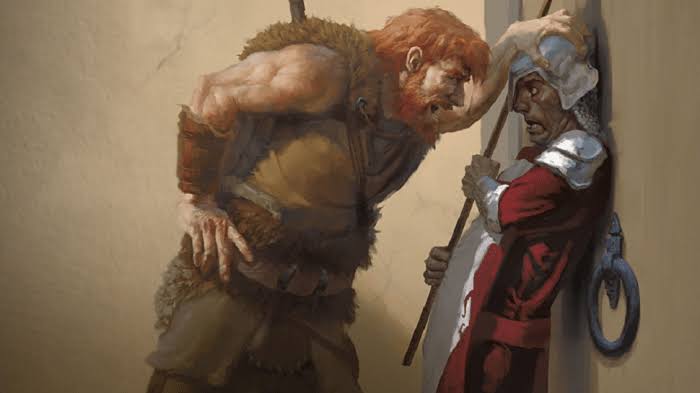
Fantastical Focus (Level 6)
Certain spells and effects can even bring a raging Barbarian to a full stop!
Thankfully, Zealot Barbarians’ rage gives them a level of unwavering focus that makes it harder for such effects to take hold.
Call it tunnel-vision or whatever else, but you can’t say it’s not useful!
If you fail a saving throw while you’re raging, you can reroll it, and you must use the new roll. You can use this ability only once per rage.
Most spells or effects that can completely ruin a character’s day fall into the classic “save or suck” category.
In other words, the (usually very powerful) effect only takes hold if you succeed on the save. If you don’t make the save, things are going to… well… really suck for you…
Think spells like Hold Person or a Mind Flayer’s Mind Blast.
You’ll be doing a lot of raging as a Barbarian, so don’t forget you’ve got this in your back pocket once per Rage.
When you need it most, this feature can make all the difference!
Recommended: Full Guide to the Barbarian’s Reckless Attack
Zealous Presence (Level 10)
At level 10, the divine power that flows through you is able to be manifested as a buff to those around you.
Inspiring others with a divine battlecry of power to release their innermost strength, you’re kind of like Tony Robbins. Well… if he was holding a huge warhammer and had some seriously unchecked anger issues, that is.
But moving on…
As a bonus action, you unleash a battle cry infused with divine energy. Up to ten other creatures of your choice within 60 feet of you that can hear you gain advantage on attack rolls and saving throws until the start of your next turn.
Once you use this feature, you can’t use it again until you finish a long rest.
Okay, so one round isn’t a lot of time, but this can still have a big impact if used cleverly!
When your party needs that extra little push to move in for an all-out attack, your Zealous Presence feature will give them just that!
Of course, it’s also handy if you suspect that an enemy has a big AoE effect (like a dragon’s fire breath) coming your way before your next turn.
The real power of this feature is that it can buff up to ten creatures.
While that doesn’t include you, it can include ally NPCs, the Ranger’s beast companion, friendly summons, or whoever else can hear you and is within 60 feet.
The more allies you can buff with this, the more impact it has on the combat as a whole!
Make sure that you’re coordinating with your party and playing strategically in combat. That’s the trick to getting the most bang for your buck with this feature.
You only get it once per long rest, but what a glorious round of combat that will be!
Rage Beyond Death (Level 14)
At level 14, the Zealot Barbarian’s hit points are more like suggestions.
Fueled with rage and a calling to bring some divine fury down upon your enemies, you don’t bother with trivial things like falling unconscious.
Combine this with your Warrior of the Gods feature and the worst-case scenario is that you die for a little bit.
So what?
While you’re raging, having 0 hit points doesn’t knock you unconscious.
You must still make death-saving throws and you suffer the normal effects of taking damage when at 0 hit points.
However, if you would die due to failing death saving throws, you don’t die until your rage ends and you die then only if you still have 0 hit points.
Okay, so you still have to make death saving throws, and the standard rules for dropping to zero hit points still apply. The only difference is that you’re not unconscious and can keep fighting.
You’ll want to always keep a healing potion or two on you just in case your allies can’t hit you with a healing spell in time.
Since you can’t drop below zero hit points in 5e, you just need to have one hit point when your rage ends to still be standing regardless of whether you failed your death saves.
This is a wonderful capstone that really highlights the idea of a Barbarian that JUST WON’T GO DOWN!
Now, you’ll still want to watch out for some particularly nasty effects that might overcome this feature.
Spells like Disintegrate or Power Word: Kill are prime examples. But those aren’t very common except if you’re fighting some of the most terrifying enemies like Beholders or Liches.
Some monsters also have attacks that will insta-kill your character (or cause some other horrible effect) if they reduce you to zero.
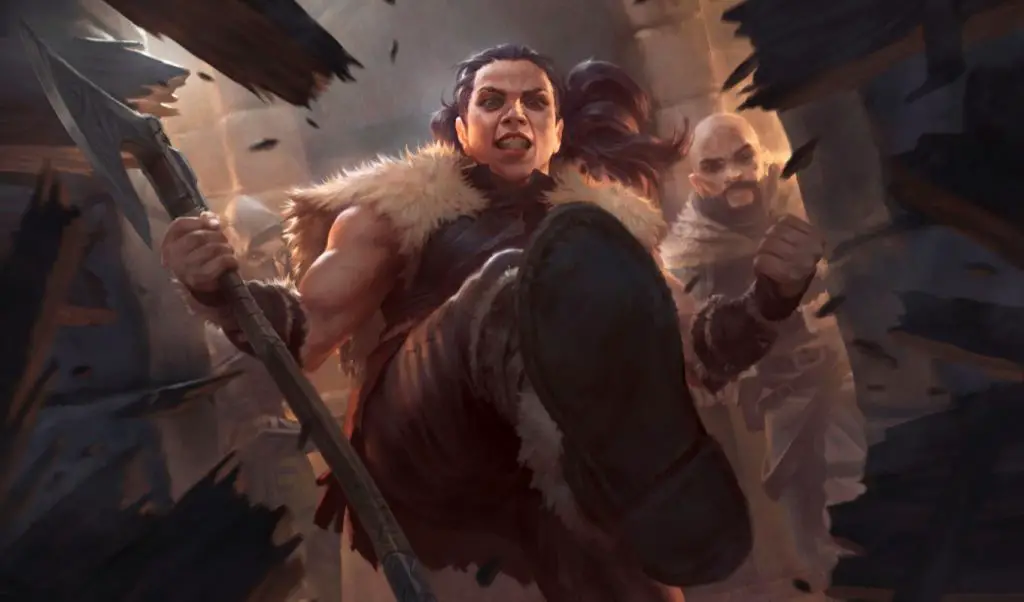
Connections
When you’re looking to tie a Zealot Barbarian into the adventure, it’s best to turn your eyes to the heavens. After all, they’re endlessly committed to (and fueled by) some divine being.
Consider how your character learned of this being and whether or not they have some kind of religious order. If so, how does your character fit into that order? If not, is your character attempting to establish one?
Most importantly, what happened that inspired such a radical faith in your character? What was that perfect “aha” moment that made them fully swear themselves to defending and/or spreading that faith?
Did your character’s tribe nearly get wiped out by another faction until a War God gave you and your people the strength to turn the tides?
Since you’re not a Cleric, you don’t need to worry too much about lofty ideas and philosophies for your character. However, you will still want an idea of what kind of behaviors and services are expected by your deity.
Perhaps it is the will of your deity that you join the rest of the party.
From there, you are expected to spread the word of that deity and use the wealth you acquire on your adventures to begin building glorious temples to their might.
The possibilities are endless with a Zealot Barbarian!
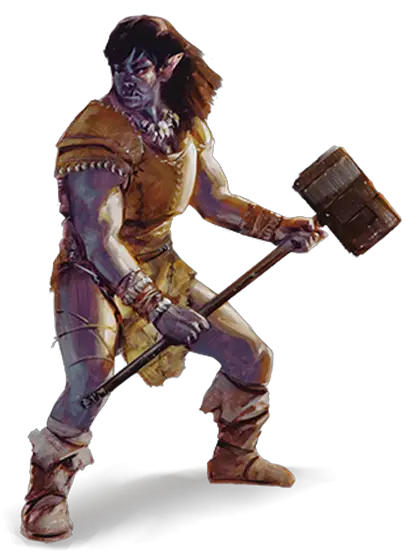
Is the Zealot Barbarian Good?
All in all, I’m a fan of the Zealot Barbarian.
There’s a ton of flavor to the subclass that really breaks from the stereotypical Barbarian character in a way that feels interesting and authentic.
When you look at what this subclass is all about, it’s definitely one of the more unique ones!
Mechanically, the features you gain as a Zealot Barbarian are excellent and straightforward. While it does work as a more defensive subclass option, don’t sleep on the extra damage output you’re getting from Divine Fury!
Sure, Warrior of the Gods is situational and won’t come up often unless you tend to die a lot. But being cost-effective to revive is a great passive feature and makes you a reliable meat shield for your party!
In a group that tends to be more comedic, you can also basically become the party’s Kenny from South Park. I don’t know how much of a selling point that is, but the thought at least gave me a chuckle.
Though I just can’t say enough about the capstone, Rage Beyond Death. It perfectly hits what I expect when I envision a character that’s simply too angry to die. It’s one of my favorite capstones in all of D&D 5e.
Just make sure that you use your Rage feature wisely. Your most important features from this subclass rely on it!
Related: Ranking Every Barbarian Subclass in D&D 5e!
Are Zealot Barbarians Unkillable?!
I’ve seen plenty of DMs express their frustration with this subclass.
If you’re looking at it on paper, the Zealot Barbarian seems functionally immortal once they get their capstone feature.
But the truth is that Zealot Barbarians are not unkillable.
Even by Barbarian standards, these characters can take a boatload of damage. Not to mention they can get brought back to life for free and are incredibly difficult to keep down.
But they’re still mortal!
The Zealot Barbarian WANTS enemies to engage with them in melee combat. 90% of the time, the Zealot can outlast just about any enemy they are up against.
But the thing that makes the Zealot such an unstoppable force of nature is their Rage feature. As it just so happens, this is also a weakness.
While they’re raging, they’re incredibly powerful. But if a Zealot is at zero hit points and still in the fight because of their Rage Beyond Death feature, anything that knocks them out of that Rage will end the effect and they’ll fall unconscious.
Spells like Hypnotic Pattern incapacitate the Barbarian and therefore end the Rage and any features being triggered by that Rage.
Fanatical Focus will help them once, but they might not be so fortunate if they have to save again.
Not mention, it’s important for the Barbarian to use their Rage feature wisely. They’ll struggle in their role if they’ve burned all of their uses of it for the day before the big fight with the boss!
Additionally, taking massive damage (damage equal to or more than your hit point maximum) results in instant death for characters, and the Zealot Barbarian is no exception.
The falling damage taken by leaping off of the highest mountain top in the land isn’t exactly something even a Zealot can always just shrug off!
Whether you’re playing a Zealot Barbarian or DM’ing for a party that has one, just be mindful of these details.
Conclusion – Zealot Barbarian in D&D 5e
When it was first released, I admittedly kind of snubbed the Path of the Zealot. Something about it just didn’t immediately grip me. I think it’s because the other subclasses it appears alongside have a lot more of a “flash” to them.
But when I went back later and really read over its features, I was blown away. In both mechanics and theme, there’s just so much to love here!
What are your thoughts on the Zealot Barbarian in 5e? Let’s chat in the comments!
Want all the latest player guides, DM tips, news, reviews, and more for D&D 5e? Sign up for the Tabletop Joab newsletter below!
You can also follow me on Facebook and Twitter!
If you found this article helpful and want to support the site, you can buy me a coffee here! (It’s not expected, but very appreciated!)

